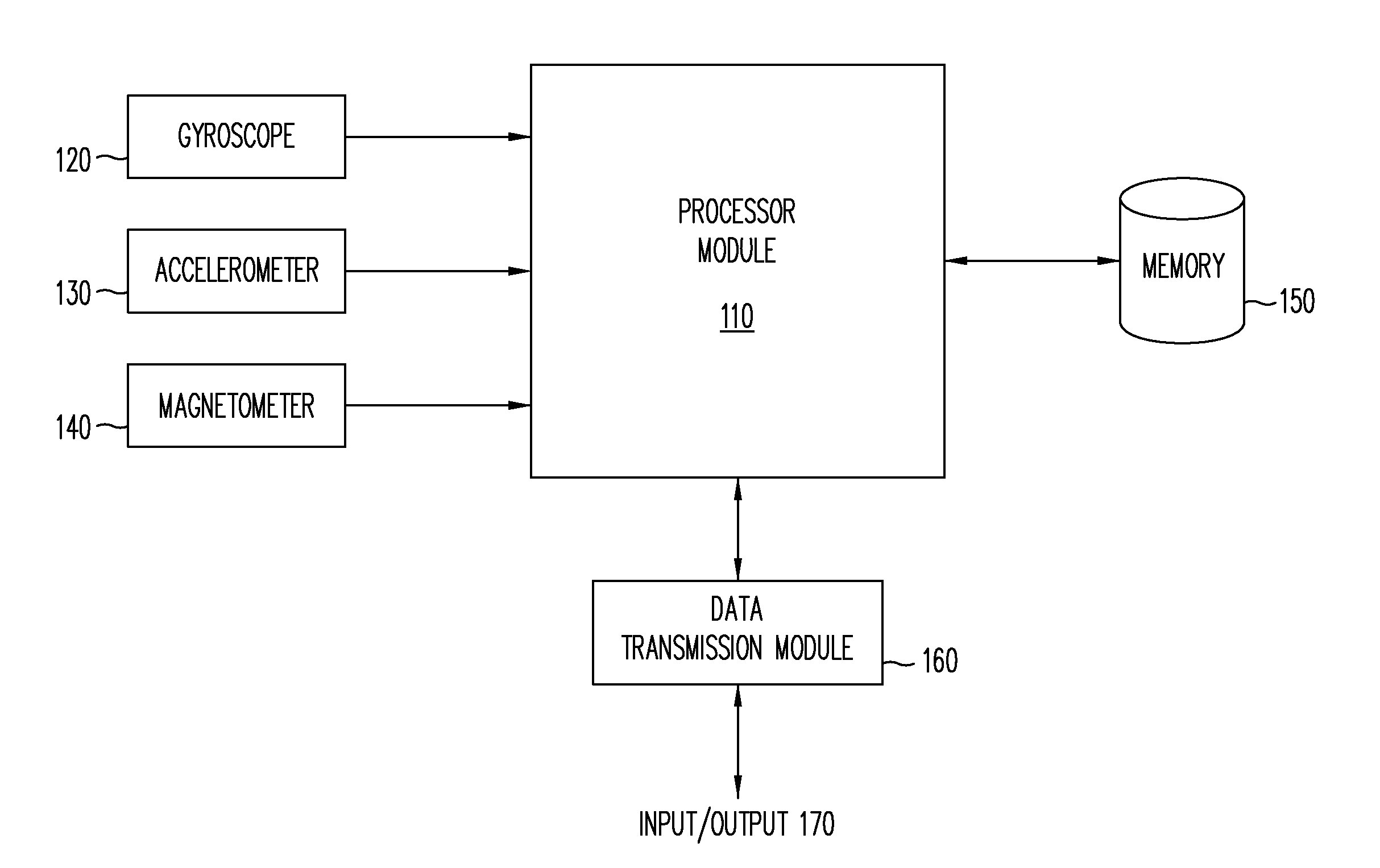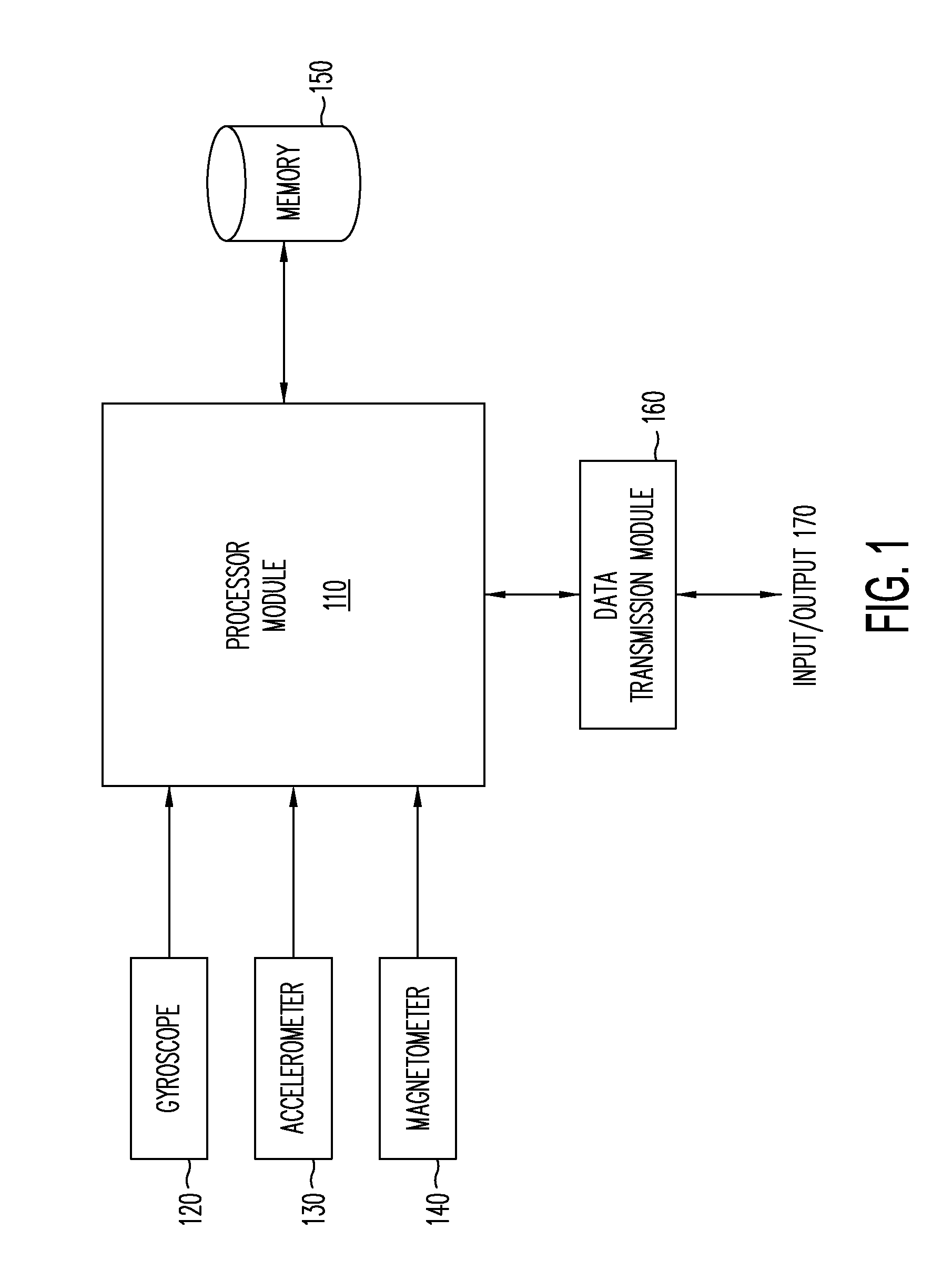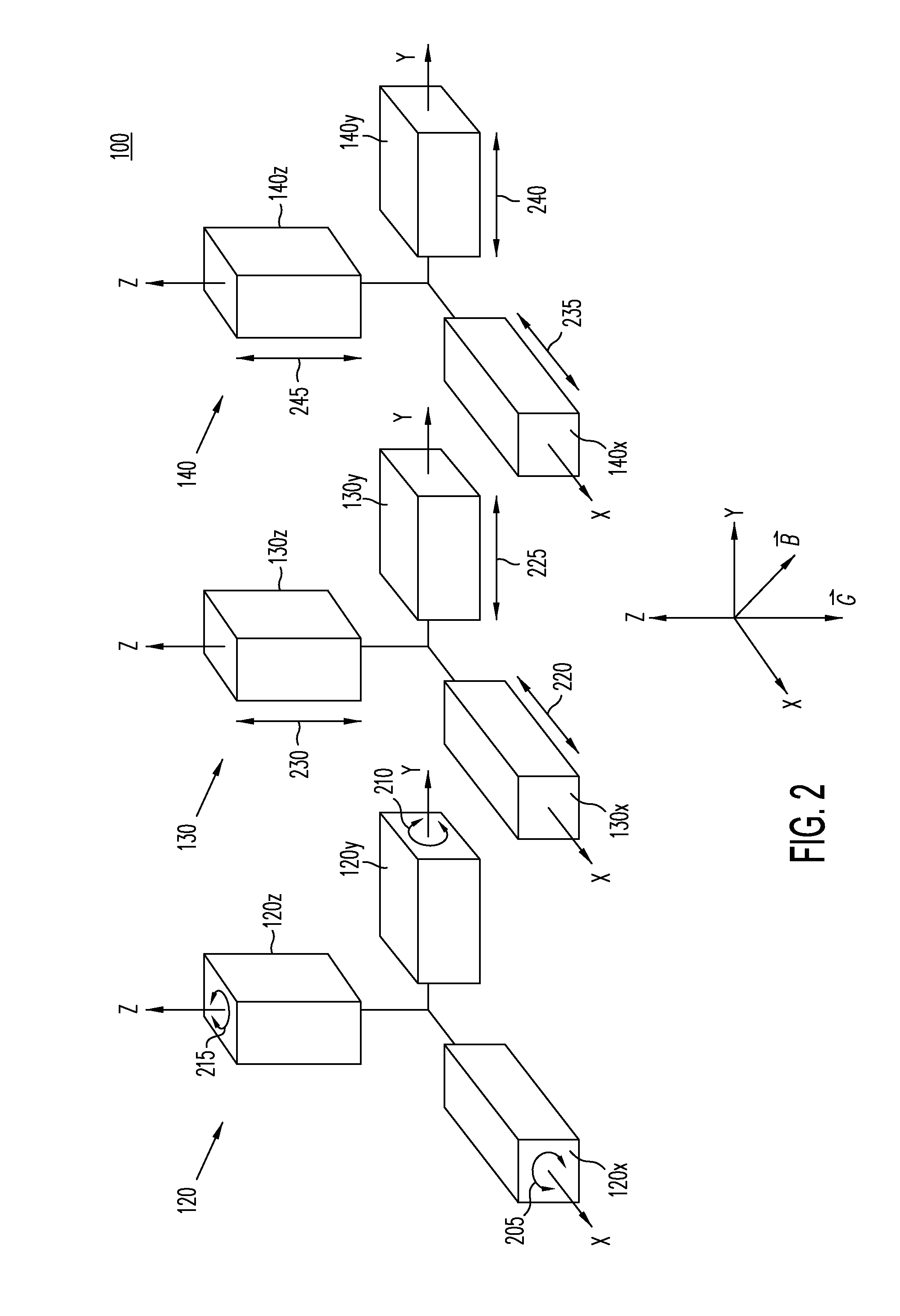Systems and method for gyroscope calibration
a gyroscope and system technology, applied in the field of sensor devices, can solve the problems of gyroscope failure to measure accurately, mems gyroscopes being susceptible to bias errors, and mems gyroscopes being susceptible to gain errors
- Summary
- Abstract
- Description
- Claims
- Application Information
AI Technical Summary
Benefits of technology
Problems solved by technology
Method used
Image
Examples
Embodiment Construction
[0015]Embodiments of the present invention provide a mechanism by which a MEMS gyroscope sensor can be calibrated or recalibrated using data gathered from other sensors in a system incorporating the MEMS gyroscope sensor. In one example, data gathered from an accelerometer and a magnetometer that are in a fixed orientation relative to the gyroscope is used to calculate changes in orientation of a system embodying all of the sensors. A constant acceleration vector (e.g., gravity) measured by the accelerometer and a constant magnetic vector (e.g., the Earth's magnetic field) measured by the magnetometer are used as reference vectors in a solution to Wahba's problem to calculate a rotation matrix providing the system's orientation with respect to those two constant vectors. By comparing changes in orientation from one measurement time to the next measurement time, measured rates of angular change can be calculated. The measured rates of angular change can be used along with observed gy...
PUM
 Login to View More
Login to View More Abstract
Description
Claims
Application Information
 Login to View More
Login to View More - R&D
- Intellectual Property
- Life Sciences
- Materials
- Tech Scout
- Unparalleled Data Quality
- Higher Quality Content
- 60% Fewer Hallucinations
Browse by: Latest US Patents, China's latest patents, Technical Efficacy Thesaurus, Application Domain, Technology Topic, Popular Technical Reports.
© 2025 PatSnap. All rights reserved.Legal|Privacy policy|Modern Slavery Act Transparency Statement|Sitemap|About US| Contact US: help@patsnap.com



